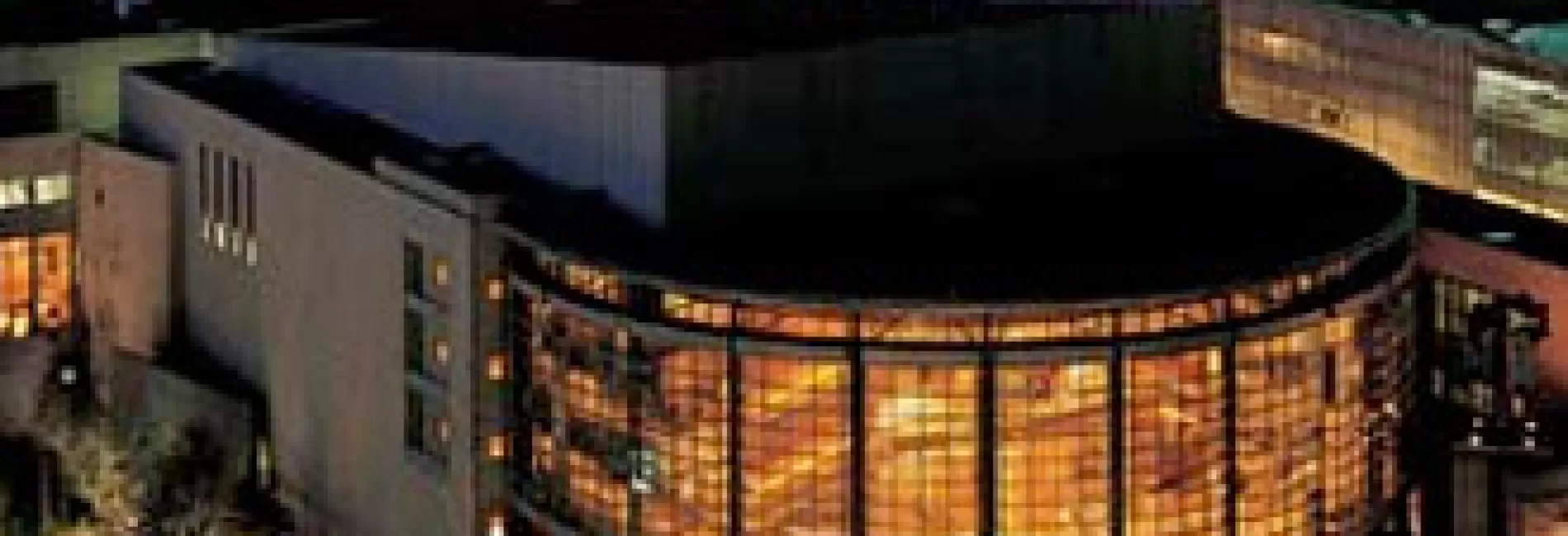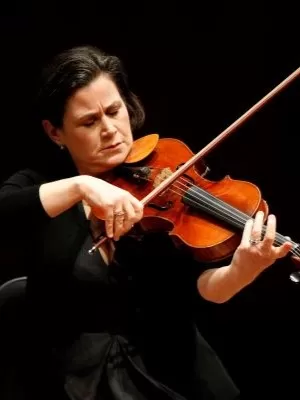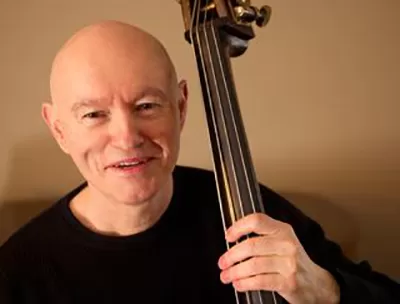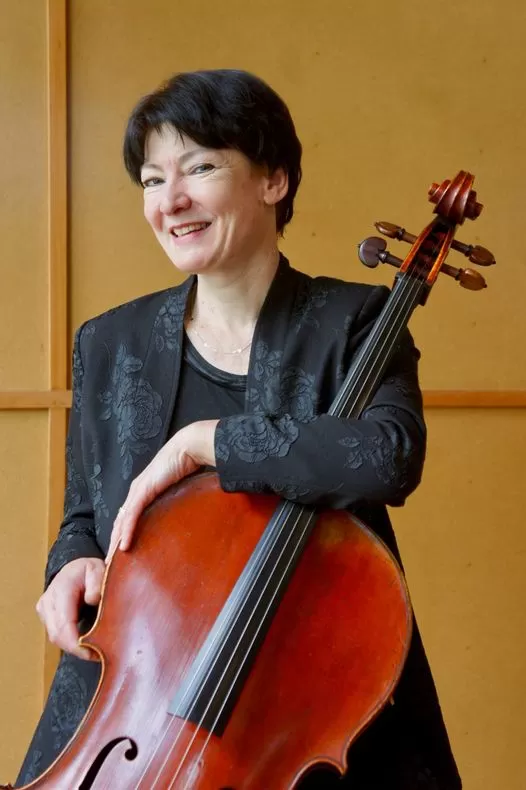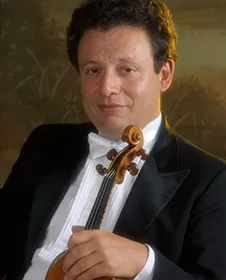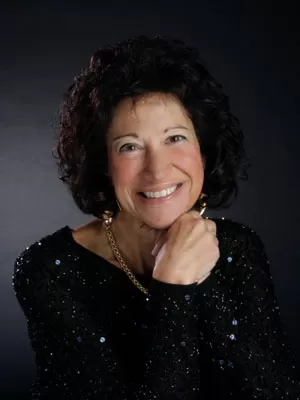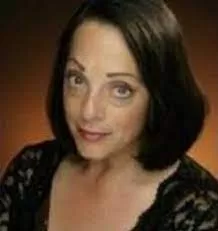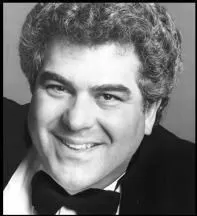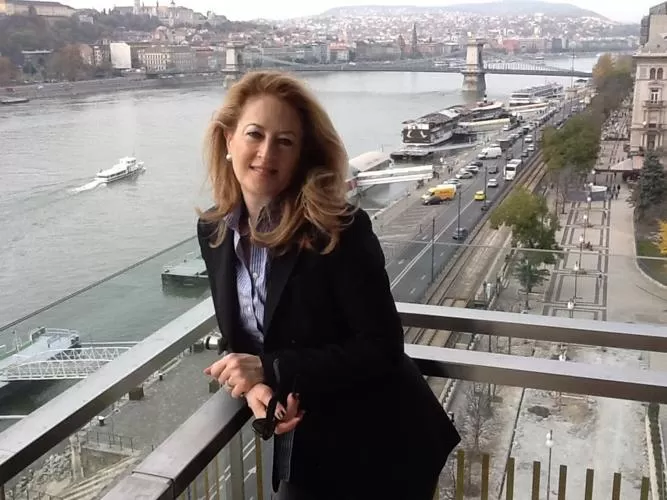Nov 9, 1998 - 7:30 pm
| Uv’tzeil knofecho (1942) (In the Shadow of Your Wings) |
David Grünfeld (1915-1963) |
|---|---|
| notated by Zikmund Schul (1916-1944) voice and string quartet |
|
| Uv’tzeil knofecho (1942) | Zikmund Schul (1916-1944) |
| string quartet | |
| V’l’Yerushalayim (1942) West Coast Premieres |
Vilem Zrzavy (1895-1942) |
| voice and string quartet Melvyn Poll, tenor Mikhail Shmidt, violin Leonid Keylin, violin Susan Gulkis, viola Mara Finkelstein, cello |
|
| Baal Shem (1923) (Three Pictures of Chassidic Life) |
Ernest Bloch (1880-1959) |
| Leonid Keylin, violin Mina Miller, piano |
|
| Concertino for Flute, Viola and Contrabass (1925) | Erwin Schulhoff (1894-1942) |
| Jody Schwarz, flute Susan Gulkis, viola Mark Bernat, contrabass |
|
| Ein judische Kind (1942) Ich wandere durch Theresienstadt Wiegenlied |
Carlo S. Taube (1897-1944) Ilse Weber (1907-1944) Gideon Klein (1919 - 1945) |
| Julie Mirel, mezzo-soprano Mina Miller, piano |
|
| Remembrance of a People (1996) Poetry by Roger Goodman West Coast Premiere |
Jonathan D. Kramer (b. 1942) |
| Mikhail Shmidt, violin Leonid Keylin, violin Susan Gulkis, viola Mara Finkelstein, cello Mark Bernat, contrabass Mina Miller, piano |
|
Uv’tzeil knofecho (Terezín,1942) - David Grünfeld (1915-1963)
for voice and string quartet
notated by Zikmund Schul
for string quartet (Terezín,1942) - Zikmund Schul (1916-1944)
David Grünfeld was an active singer in Terezín, appearing in operas, as soloist in oratorios and in solo recitals. In the role of Pierrot, he participated in the rehearsals of Viktor Ullmann’s Der Kaiser von Atlantis in September 1944, the performances of which were forbidden by the Germans, and on October 28 was deported to Auschwitz on the last transport from Terezín. He was also a cantor, and obviously well-versed in cantorial styles.
In 1942 he dictated a melody, entitled Uv’tzeil knofecho ("In the Shadow of Your Wings") to Zikmund Schul. Schul’s notation does not include the text, which in fact readily suits Grünfeld’s melodic line. The text is a passage from the daily and Sabbath evening service, where it follows recitation of the Amidah. This prayer, known as Hashkiveinu ("We Lay Down"), asks for God’s protection from enemies, sickness, sword, famine and grief. It also seeks defense from the "adversary," a metaphoric term for Satan, which implies the Yetzer ha’Ra ("Evil Inclination"). In addition to notating the melody, Schul was inspired by it to write a modest piece for string quartet, suggesting, but not quoting, a few nuances of Grünfeld’s original melody.
-Program note courtesy of David Bloch
V’l’Yerushalayim (Terezín, 1942) - Vilem Zrzavy (1895-1942)
arranged by Zikmund Schul
for voice and string quartet
Prague-born Vilem Zrzavy, as a member of the first work squads, arrived in the ghetto on December 10, 1941. His transport card indicated that he was "an employee in a confectioner’s shop," and is listed in the Terezín Monument’s archives as having been a baker. As early as April 28, 1942, he and his wife were sent to Zamoschsche.
He might not be remembered at all if Zikmund Schul had not arranged Zrzavy’s V’l’Yerushalayim, a cantorial melody whose manuscript is among those of Schul which were gathered together with his own by Ullmann after the younger composer’s death. Schul demonstrates familiarity with a traditional type of accompaniment to such melodies. To some listeners, Zrzavy’s opening phrase suggests the beginning of the third movement from Dvorak’s Symphony No. 8. Although the manuscript of this arrangement does not indicate its instrumentation, it seems quite obvious that string quartet is the intended ensemble. Zrzavy is known only as having written this melody, whose text is from the Amidah for the daily morning, afternoon and evening service. Prayers for protection, redemption and rebuilding of Jerusalem were very much on the minds of Jews in Terezín.
-Program note courtesy of David Bloch
Baal Shem (1923) - Ernest Bloch (1880-1959)
(Three Pictures of Chassidic Life)
Ernest Bloch emigrated to the United States in 1941 from Switzerland, where he had lived for most of the 1930s. Because of rampant anti-semitism throughout Europe, and the Third Reich’s music policies banning the performance, publication and employment of Jewish composers, Bloch chose to return to America, where he had already begun establishing his career in the 1920s. His significant contribution to American musical life included the Directorship of the Cleveland Institute of Music (1920-25), the Directorship of the San Francisco Conservatory (1925-30), and a professorship at the University of California, Berkeley (1942-52).
Bloch’s Baal Shem (Three Pieces of Chassidic Life), composed in 1923, depicts spiritual and religious elements of orthodox Jewish life. The first movement, Contrition, addresses the act of atonement for one’s sins; Nigun, an improvisation, reflects on the deep emotional and religious feeling of this act. Rejoicing speaks to a fundamental aspect of Judaism. In this work, however, it specifically relates to the annual festival of Simchas Torah (which celebrates the completion of the reading of the Book of Law).
Concertino for Flute, Viola and Contrabass (1925) - Erwin Schulhoff (1894-1942, Wülzberg)
Whether or not Schulhoff had been born Jewish, his musical and political values would have placed him in disfavor with the Nazi regime. His compositional style, with its emphasis on atonality, jazz and folk elements, was considered ‘degenerate’ by the Third Reich. His political values were equally radical. He was an ardent communist (from the 1930s onwards), and took Soviet citizenship after the Munich agreement. Both religion and politics led to his imprisonment during the German occupation. He perished in the Wülzberg concentration camp in August 1942.
The Concertino for Flute, Viola and Double Bass was composed in Prague (1925). During this period, Schulhoff was fascinated by the rustic culture of Ruthenia, the easternmost part of pre-World War II Czechoslovakia. Numerous folk idioms of that region have been noted in this composition: an accompanying figure at the beginning of the first movement (a Russian Orthodox litany), and a Ruthenian love song in the third movement. Additionally, motives from the Czech dance are employed in the second movement.
Ein judische Kind (Terezín, 1942) - Carlo Taube (1897-1944, Auschwitz)
text by Erika Taube
Although Carlo Sigmund Taube, born in 1897 in Galicia, was a concert virtuoso, he worked mainly as a nightclub pianist between the First and Second World Wars. While in Terezín, he conducted the Taube Orchestra as well as the Stadkapelleorchester, and composed a number of works which are now lost. His only surviving composition is this song written to a text by his wife, Erika. It is a poignant reminder that their child’s normality is marred by his lacking a home. The song is eloquently simple, quite Jewish in style, and its vocal line echoes cantorial phrases and some keyboard inflections of a similar nature. In 1944 the Taubes and their child were murdered in Auschwitz.
Ich wandere durch Theresienstadt - Ilse Weber (1907-1944, Auschwitz)
(I Wander Through Theresienstadt)
Ilse Weber, born in Ostrava in 1907, was a poet, writer of children’s books and produced programs for the radio in Prague. She succeeded in sending her eldest son, Hanus, to Sweden in a children’s transport before the war. Transported in 1942 to Terezín with her younger son and her husband, Ilse was put in charge of the children’s infirmary. An amateur musician, she often accompanied herself on the guitar, singing her poems to original melodies. Ich wandere durch Theresienstadt is simple, folk-like, but deeply felt. Ilse voluntarily joined her husband when he left for Auschwitz, where she and Tommy perished in 1944.
-Program note courtesy of David Bloch
Remembrance of a People (1996) - Jonathan Kramer (b. 1942)
Jonathan Kramer writes:
The theme of this music is the Holocaust and memory. It is concerned with how the Holocaust haunts history's collective memory; with humankind's tortured memories of the cruel events that took place in Europe in the 1930s and '40s; with the importance of never forgetting those who perished; with the painful memories that Holocaust survivors carry within themselves even today; with how the tortures of the victims affected their own memories; and with my personal memories of learning about the Holocaust from parents, relatives, friends, books, articles, movies, television, and radio.
As I composed, images and emotions drifted through my mind. Some of them became associated with particular passages in the music. Thus several verbal phrases appear in the score. They are intended to suggest to the performers the appropriate expression. They do not add up to a narrative, or to a coherent story, and they are not of direct relevance to listeners.
Instead of trying somehow to tell an audience which phrases apply to what music, I asked Roger Goodman to write brief poems that try to capture some of the moods expressed by these words and by the music. The poems do not describe the music, nor does the music reflect the poetry. But the two are related.
The title of the first movement, Arbeit Macht Frei, is the horrible phrase that appears over the entrance gate to the concentration camp at Auschwitz. These words, which mean "Work Makes You Free," conjure up history's tormented memories of the work camps and death camps.
Brief Lives, Endless Memories deals with what the Holocaust means today. We can never forget the senseless deaths, the broken lives, the magnitude of the attempt to eradicate humanity.
Different sorts of memories come into play in Past Joys, Present Sorrows. The condemned remember their own past. Their torture made their past more cherished than it probably deserved to be, yet all the more distant. Dance music represents a past destroyed by life and by death. As torments magnify, the past becomes harder to recapture, or even to remember.
While we theorize about how and why the Holocaust happened, while we mourn the loss of life and the loss of humanity, while we read and write about mass genocide, while we try to deal with horror through art one thing remains central. This is no story, this is no intellectual exercise. Beyond feelings, beyond explanations, lies the recognition of the Holocaust's actuality. The final movement deals not with specific images and feelings but with inescapable reality. We often hear that we must never forget the reality of the Holocaust. We must also remember the victims as people, not just as fatalities. We must not allow those who perished to perish again, swallowed up by the anonymity of history. They each had a life, a story, aspirations beyond survival.
Symbolic of these individuals and the way the Holocaust isolated them, the last movement consists mainly of separated phrases. Like each phrase in this music, each victim was an individual, alone in his or her death. We must keep the memory of these victims alive. Their deaths shall live.
